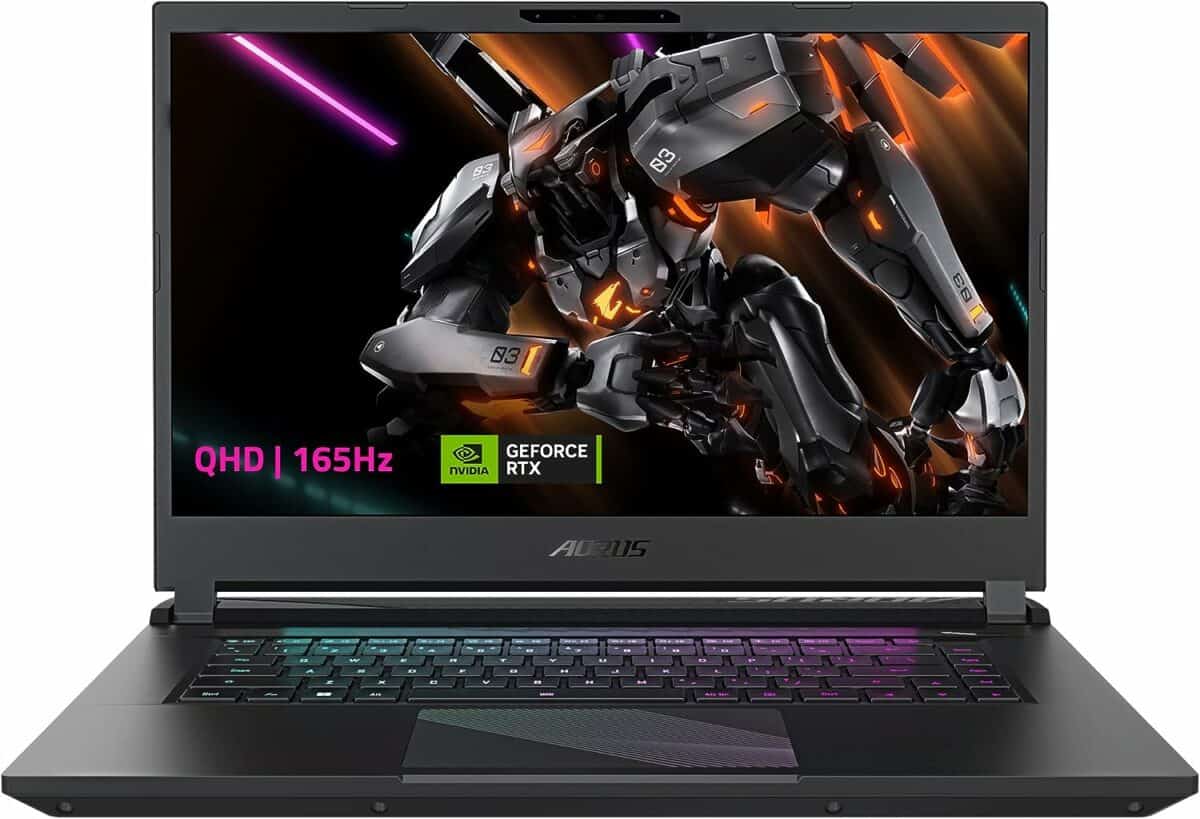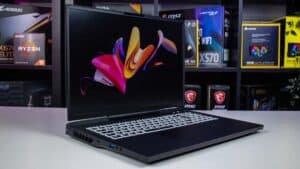Best 144Hz laptop & 165Hz laptop in January 2024
The best 144Hz laptop & 165Hz laptop models available across all price points and resolutions
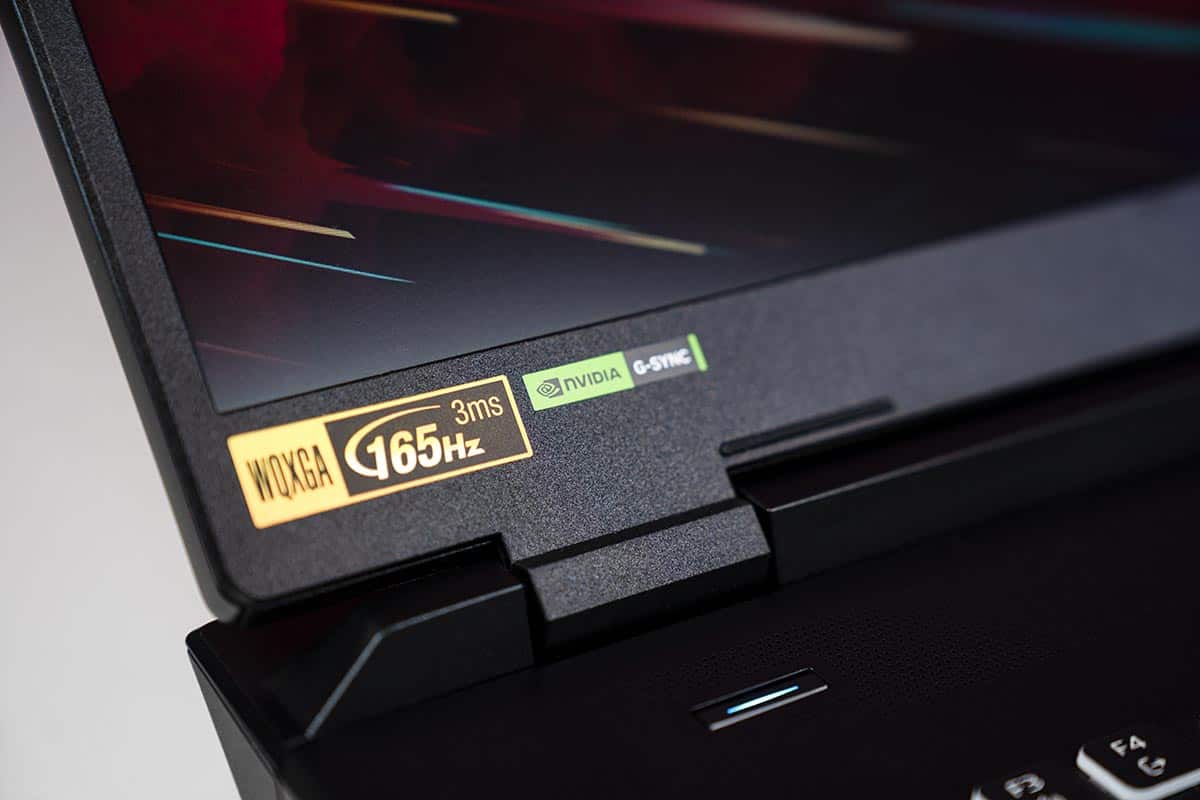
WePC is reader-supported. When you buy through links on our site, we may earn an affiliate commission. Prices subject to change. Learn more
This page will help you find the best 144Hz laptop or best 165Hz laptop for your gaming needs. These two refresh rates are the sweet spot for most gaming displays, enabling the majority of people to enjoy fast-paced shooters at a high enough effective FPS to play competitively, whilst either being more affordable than higher refresh rate screens, or allowing for higher resolution displays like 1440p. Virtually all these selections come with an IPS display panel, with TN panels not being favoured for gaming laptops, although increasingly OLED gaming laptops are starting to appear. If you’re interested in seeing our top selections for gaming laptops not limited to this category, have a read of our best gaming laptop page in the mega menu above.
Here at WePC our experts are contstantly striving to stay up to date with the latest tech releases, so you can rest assured that each of our buying guides will have the latest products listed that are worthy of your cash. If you want a quick buy right now, we’ve made a shortlist of our top three gaming laptops in this category immediately below. If you want to do a bit more research however, cast your eyes lower for a wider number of individual product reviews, plus some further information about the market.
Hz laptop meaning: laptop refresh rate explained
The refresh rate of any kind of display, be it a laptop screen or a desktop monitor, measures how many times the image on the screen is redrawn/refreshed within a second. This is measured in Hertz (Hz). Refresh rate becomes particularly apparent when trying to depict objects moving at high speed, for completely still images it is not noticeable at all. Essentially, if an object is moving fast (such as an enemy player jumping around a corner) the time it spends in each place on your screen is very low. If the refresh rate of the screen is not high enough, the object will have passed through a noticeably large amount of space in between each refresh of the image, meaning it will appear to have jumped, leading to a stuttering effect or, in extreme instances, appear to have teleported completely. A high refresh rate will be able to depict every minute change in the object’s travel along the way – leading to a smooth moving image. Low refresh rates hinder one’s ability to see faster-moving images and react to them, thereby negatively affecting performance in fast-paced games.
Best 144Hz laptop & 165Hz laptop 2024: in-depth review
A great value 144Hz gaming laptop with RTX 3060 GPU

HP Omen 16 (144Hz FHD, RTX 3060)
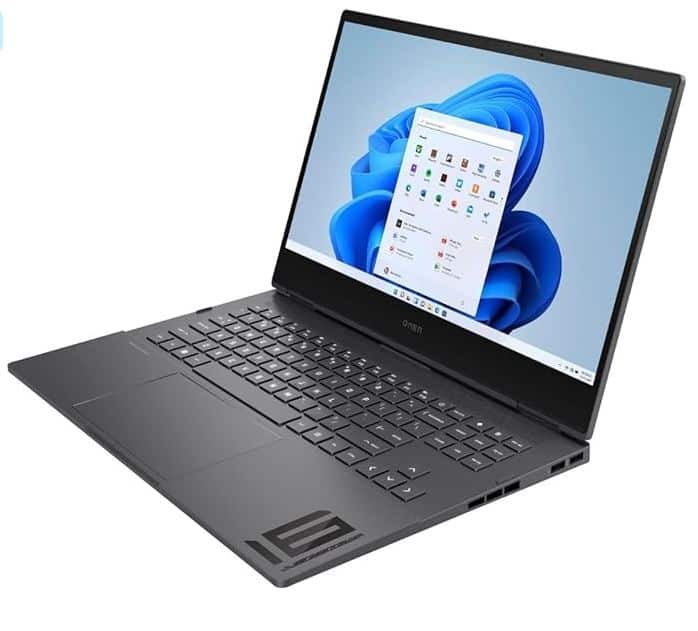
CPU
AMD Ryzen 7 6800H
Graphics
NVIDIA GeForce RTX 3060
RAM
16GB DDR5 RAM
Storage
1TB SSD
Screen Size
16.1”
Max Refresh Rate
144Hz
- Solid performing GPU & CPU for the money
- Great sRGB color replication
- Good brightness
- Good selection of ports
- Fans can get loud
The HP Omen 16 is a fantastic value gaming laptop of around the lower mid-range, which offers one of the best price/performance ratios of any device you’re likely to find.
Equipped with an RTX 3060 GPU, this laptop delivers solid mid-range performance, capable of running most games on low-medium settings. The Ryzen 7 6800H CPU is also a robust performer. Under strain, the laptop can get a bit loud, but performance settings in the onboard software can be adjusted to mitigate this. The DDR5 memory is a positive feature, and the device offers a good selection of I/O ports, including 2x USB-A, 2x USB-C, and an ethernet port.
Featuring a 16-inch screen, the laptop boasts a maximum refresh rate of 144Hz and an impressive peak brightness of 400 nits, which is substantially brighter than most gaming laptops in this price range can manage. It also provides around 99% sRGB gamut for color replication, again well above average, and though the color accuracy may not be suitable for color-accurate creative work, it remains reasonable with an average deltaE of approximately 4.17.
A superb 165Hz gaming laptop with RTX 4060 GPU

Acer Predator Helios Neo 16
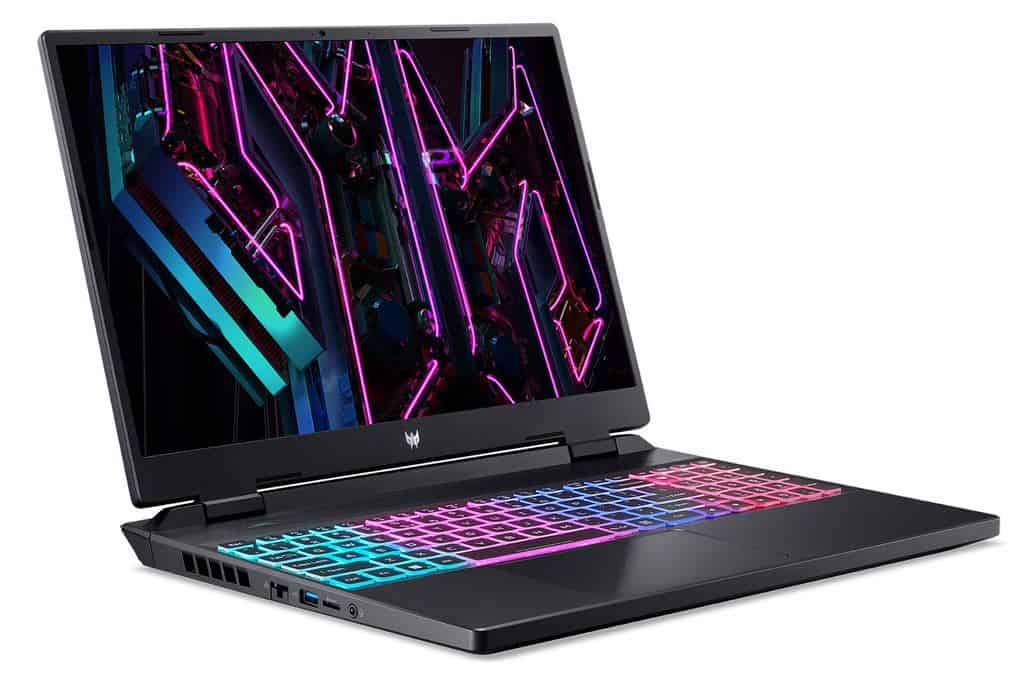
CPU
Intel Core i5-13500HX / i7-13700HX
Graphics Card
NVIDIA GeForce RTX 4050 / 4060
RAM
16GB DDR5 RAM
Storage
512GB/1TB SSD
Max Refresh Rate
165Hz
Resolution
1200p / 1600p
- high-performing CPU and GPU for the money
- comes with Advanced Optimus
- 1600p screen with G-Sync
- great peak brightness and good color replication
- good battery life for a gaming laptop
- good selection of ports & sockets
- build quality flimsy around the bezels
- fans get loud on the maximum preset
- heavy power adapter
The Acer Predator Helios Neo 16 can be equipped with different GPU and CPU variants, bu the one we most recommend, which we tested and benchmarked in our in-depth review, is the RTX 4060 and i7-13700HX model, which hits well above its weight for in-game performance. This is further enhanced by the inclusion of Advanced Optimus, a feature not commonly found in this price range.
With this laptop you get a lot for your money, and it’s one of the best cost-effective gaming laptops of this year. The other standout feature of this laptop is its high-quality display, with an impressive peak brightness of 500 nits – meaning you could feasibly use it outdoors if it’s not too sunny, plus relatively accurate colors, a 1600p resolution (with a 16:10 aspect ratio for an improved vertical screen size), and a maximum refresh rate of 165Hz. It also comes with G-Sync. Additionally, the laptop excels in terms of battery life, offering around 7 hours of general use in battery-saving mode, enhancing its utility as a general productivity machine. It also provides a robust selection of ports, including Ethernet support.
The main drawback of the deivce is the noise generated by the fans when the Turbo mode preset is activated. However, users can mitigate this by adjusting settings in the onboard software to strike a suitable balance between in-game performance and noise levels. There are some other relatively minor drawbacks, such as the less-than-optimal build quality of the bezels and a somewhat hefty power adapter, these are reasonable compromises given the overall value provided.
An affordable RTX 4070 gaming laptop with 144Hz display

Gigabyte AORUS 15 (i7-13700H, RTX 4070)
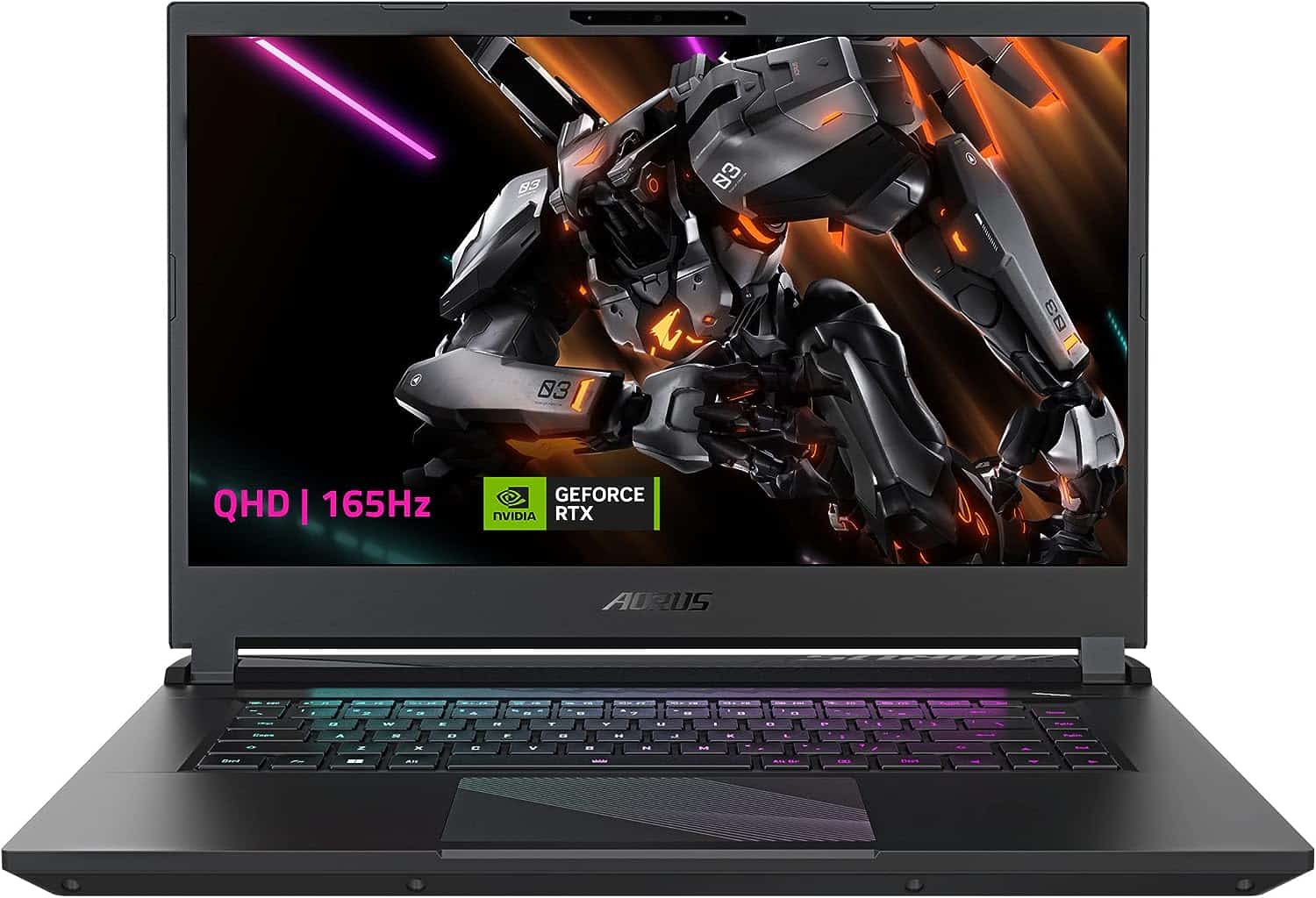
CPU
Intel Core i7-13700H
Graphics Card
NVIDIA GeForce RTX 4070 Laptop GPU
RAM
16GB DDR5
Storage
1TB SSD
Screen Size
15.6″
Max Refresh Rate
165Hz
- Great value for money
- Current-gen specs (40-series GPU and 13th Gen Intel CPU)
- Stunning QHD resolution
- Good battery life
- Thunderbolt 4 support
- Relatively low-powered RTX 4070
- Lacks some premium features like G-Sync
The Gigabyte AORUS 15 is a fantastic value laptop which is arguably the cheapest RTX 4070 laptop you’re likely to find, and as a result secures a place in our best gaming laptop under $1,500 guide.
Although the RTX 4070 it comes with isn’t the most powerful around in TGP terms, combined with the Intel Core i7-13700H it still packs a very nice punch, well above what you’d normally expect for a gaming laptop of this price. With 16GB of RAM and a spacious 1TB SSD, it provides ample memory for multitasking during gaming sessions or various workstation tasks. The 2560 x 1440 resolution screen with a 165Hz refresh rate offers an immersive visual experience for gaming, although the color gamut might not meet the demands of color-intensive workstation tasks. Notably, the absence of G-Sync support can result in occasional screen tearing.
While the fan noise can be relatively loud, potentially affecting its suitability as an office machine, the laptop manages a commendable 7 hours in battery saver mode, surpassing the average for gaming laptops. Featuring a reliable trackpad with a built-in fingerprint scanner and a mechanical-like keyboard that offers a comfortable typing experience. The laptop’s port selection is generally satisfactory, even including a Thunderbolt 4 port, which may be essential for some users. Overall, the Gigabyte AORUS 15 provides excellent value at its price point and stands out as a robust choice for gamers and power users.
A terrific value 1440p 165Hz gaming laptop with AMD 5900HX CPU & RX 6800M GPU

ASUS ROG Strix G15 Advantage Edition (165Hz 1440p)
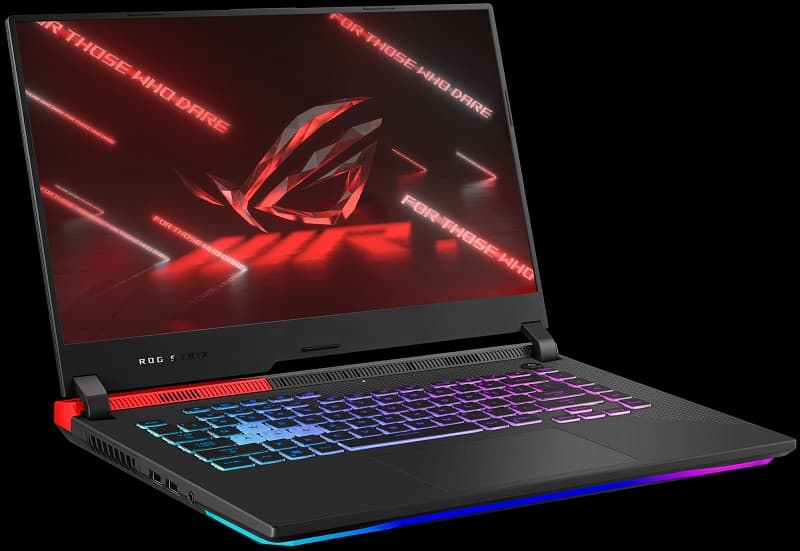
CPU
AMD Ryzen 9 5980HX
GPU
AMD Radeon RX 6800M
RAM
16GB
Storage
512GB SSD
Screen Size
15.6″
Max Refresh Rate
165Hz
- AMD Radeon RX 6800M GPU
- AMD Ryzen 9 5900HX CPU
- 1440p display
- Superior battery life
- Respectable speakers
- slow stock RAM bottlenecks performance
- no webcam or no SD card reader
- cheaper versions only come with 512GB SSD
- AMD GPU lacks Ray Tracing
The ASUS ROG Strix G15 Advantage Edition comes in two main varieties: the 1080p 300Hz display version, or the 1440p 165Hz option. Either option offers superb value for money, with the 1080p version being our top pick on our best gaming laptop under $1,500 page. The color replication and contrast on both displays are solid, more than enough for a gaming laptop, though not up there with the premium offerings, and the response time is equally respectable.
Other than the display, both versions of this laptop come with the same core components, with an AMD Ryzen 9 5900HX processor and an AMD Radeon RX 6800M graphics card. The 5900HX CPU is literally the best you can get in a gaming laptop, so there’s no room for criticism there, and the RX 6800M GPU can go toe-to-toe with an Nvidia RTX 3070 (laptop version) in terms of raw FPS, though it lacks the same Ray Tracing capabilities. Simply put, you won’t find better power per price in a gaming laptop.
There are other areas in which the ASUS ROG Strix G15 Advantage Edition performs well which are surprising for a gaming laptop. Chief among these is the battery life, which can reach up to 9 hours when doing non-gaming, non-demanding tasks – very impressive for such a powerful laptop, and a testament to the efficiencies AMD have brought about with their Advantage Edition line. The speakers on this machine, whilst not terrific, are also actually pretty solid – with bass replication that is certainly better than the majority of the competition in this price range, and definitely good enough to enjoy watching YouTube and Netflix on.
For those looking for a laptop that can do more than just game, the lack of an integrated webcam or SD card reader may be off putting, though these can easily be bought seperately. The lowest spec option of this machine only comes with a 512GB SSD, and this is far too low for a modern gaming machine – we’d advise going with the 1TB version as a minimum.
The one major drawback of this laptop is that the performance is heavily bottlenecked by the slower RAM stock that it comes with, even by the standards of an AMD machine. Performance out of the box is still good value for what you pay for, but we’d heartily recommend upgrading the RAM as soon as you can, which can unlock an additional 10% of FPS performance in some titles, even up to 20% in a handful of cases.
The best 165Hz gaming laptop for portability
Razer Blade 14 AMD Gaming Laptop (RTX 3080, 1440p, 165Hz)
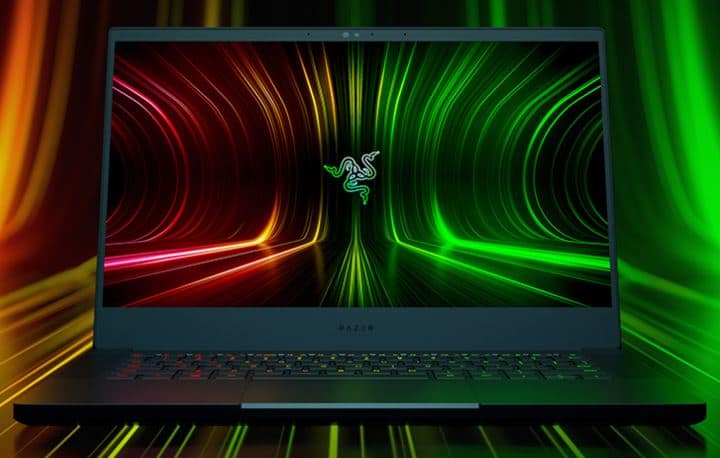
CPU
AMD Ryzen 9 5900HX
Graphics
NVIDIA GeForce RTX 3080 (8GB) 90-100W
RAM
16GB
Storage
1TB SSD
Screen Size
14”
Max Refresh Rate
165Hz
- AMD Ryzen 9 5900HX is a great CPU
- RTX 3080 in a compact gaming laptop
- 1440p display
- Great color replication
- Great contrast and brightness
- Great build quality
- Thin and lightweight
- Good response times for a smaller laptop
- Only 16GB RAM which cannot be upgraded
- Expensive
- Low TGP RTX 3080 GPU
- Only 8GB VRAM RTX 3080
- Fairly loud fans
The Razer Blade 14 is the best 14-inch gaming laptop currently available. This 165Hz gaming laptop has the classic high contrast ratio, bright, vibrant colored display that Razer laptops are associated with. The screen is around 99.8% accurate in the sRGB space and 83% for AdobeRGB, making it suitable for graphic design work and other color accurate work, besides just the gaming experience. 1440p is overkill for such a small display in our opinion, but there’s no denying that it makes the screen look crisp and has its uses for creatives, plus the resolution can be turned down to 1080p in game no problem.
In terms of gaming, the real response time of the screen is around 9ms gray-to-gray, which isn’t fast compared to the other selections on this page, but still makes it the fastest response time for any 14-inch gaming laptop money can buy. FreeSync is fully supported and the 165Hz refresh rate is more than adequate.
Looking at the core components then, the AMD Ryzen 9 5900HX CPU is the best processor available for a laptop in terms of FPS performance, and helps extend the battery life further than an Intel option would. The 8GB RTX 3080 is a relatively underpowered version of the Nvidia graphics card, not just in VRAM terms but also TGP (90-100W), so performs alongside many upper echelon RTX 3070 laptops in games; however, once again it still represents the best that money can buy in a laptop of this size. The reality is that such a thin and small chassis puts restrictions on the level of power you can realistically put into it, so that being the case, the Razer Blade 14 is still a very impressive machine.
The build quality of Razer Blade 14 is superb. The fans are quite loud when gaming especially, and we would have liked to see upgradability for the 16GB of RAM, though this is still a decent amount to play with. The only other downside to this laptop is the high price, though if you want the best portable gaming laptop, this is it.
Things to consider when buying a 165Hz or 144Hz laptop for gaming
If you want to know what to consider when looking for a gaming laptop in general, regardless of subcategory, have a quick look at this same section on our main best gaming laptop page. The below points will be a quick summary of what you need to be aware of when shopping for devices with these particular maximum refresh rates.
165hz vs 144hz laptop displays
At the time of writing, most new laptop and monitor displays that would have been 144Hz in days past are now 165Hz. In other words, 165Hz gaming laptops are the new standard for most models in the middle price range, or 1440p display laptops, and any 144Hz laptop for gaming that you encounter will likely be a slightly older model; this doesn’t mean they aren’t worth buying though, particularly if you’re looking for a budget gaming laptop.
Ultimately, the difference between 144FPS and 165FPS will not be particularly noticeable to the average gamer, and will only make a slight bit of difference (14.6% to be exact) to your competitive gaming performance, still, every little helps. Either way, both refresh rates offer a great middle-ground between FPS performance and cost-effectiveness.
Is a 144Hz refresh rate good for gaming?
The short answer to this question is yes, at least for the vast majority of gamers. Whilst the perceptible difference between 60Hz and 100Hz is huge, and almost the same gap between 100Hz and 144Hz is less significant, but still substantial, by the time you go from 144Hz or 165Hz up to 240Hz or higher, the same numerical gap (in terms of Hz) just doesn’t feel as noticeably different. 240Hz or even 300Hz and 360Hz are only for those gamers who are committed to squeezing every edge they can out of games like CS:GO, the Call Of Duty, or Battlefield series etc. Even so, you will need a truly beastly gaming laptop, and a willingness to turn the graphical settings down, in order to achieve these kind of FPS in your games. For most people a laptop at either of these refresh rates will be perfectly adequate.
FreeSync and G-Sync support
FreeSync and G-Sync are collectively known as Variable Refresh Rate (VRR) or adaptive sync technologies, which help to smooth out motion displayed on the screen, and reduce the artefact known as screen tearing. This is accomplished through more precisely matching (i.e. synchronizing) the frame rate output of your PC with the refresh rate of your display.
FreeSync is AMD’s version of the technology, whereas G-Sync is Nvidia’s, although GPUs from both manufacturers can use either technology to a degree, full G-Sync is often only usable by machines with an Nvidia graphics card. G-Sync Compatible is the term used to describe the less potent version of the technology, and you’ll find a lot of gaming laptop display with native FreeSync support which are also G-Sync compatible.
1080p vs 1440p gaming laptops
Every laptop you will see recommended on this page which comes with either a 144Hz or 165Hz refresh rate will have 1080p (aka HD) or 1440p (aka QHD or WQHD) resolution. Refresh rate and resolution are the chief determinants (besides size) of the price of a screen, so if we’re keeping the refresh rate constant then you can expect the 1080p models to be the cheaper options available. 165Hz is increasingly the standard for any recently released 1440p gaming laptop, and you’ll only find higher refresh rates on premium end 1440p laptops.
Generally speaking, we’re of the opinion that 1080p is the perfect resolution for any gaming laptop with a 15-inch display or smaller. At this size, the benefits of a 1440p display, whilst noticeable, aren’t usually worth the sacrifices that must be made in other areas (i.e. price and the lower FPS performance on the higher resolution screen). Still, if you have your heart set on a 1440p display, either for light workstation use, watching higher-res movies and films, or just because you like the look of them, you can always turn down the resolution settings in-game to 1080p to maximize your FPS.
4K 165Hz & 144Hz laptops
As of 2023, laptops with 4K resolution ane panels which can reach either of these refresh rates are starting to become fairly common, such as the MSI GE76 Raider 10UH or the Razer Blade Pro 17 4K Touch. Previously, most 4K laptops tend to come in at a refresh rate of 60Hz, which isn’t a high enough refresh rate for competitive online gaming, and is only around the minimum we’d recommend for slower-paced, single-player titles. 120Hz models then became more common in 2022, which were the first proper gaming devices with this resolution.
Why 144Hz?
144 might seem a very specific number for a refresh rate. If you’ve pondered the question ‘why 144Hz?’ the answer lies in the movie business. Films are traditionally exported at 24FPS, and 144 is a multiple of 24, just as 120 is. 3D films are also commonly shot at a standard 48FPS, which 144 is also divisible by. This makes it easier to convert 24FPS/48FPS to a 144Hz video output: each frame of the former is ‘sent’ six times to the display, and each frame of the latter is sent three times to the display. 60FPS footage, which is a common standard for video in the USA, is a bit more difficult to match up (it requires a variation of the process known as 3:2 pulldown, but for a 5:12 ratio) but the fact that both 60 and 144 are divisible by 12 makes it a bit easier than it otherwise would be.
What happens if I connect a 144Hz laptop to a 60Hz monitor?
If you connect a 144Hz laptop to a 60Hz monitor, the maximum effective FPS you will be able to experience when playing your PC games will be 60FPS, as the display won’t be able to output any more images than this, per second.
Which laptop has the highest Hz?
The highest refresh rate for a laptop display is currently 480Hz. This is frankly a ridiculously high refresh rate, and is beyond what’s necessary for even high-end, fast-paced competitive gaming. If your laptop doesn’t have the hardware to run your chosen game on your preferred settings at near 480FPS, then it’s largely a pointless expense; it probably won’t even reach 360FPS on 1080p/FHD resolution unless it’s an older game like CS:GO and a fairly powerful laptop, so even 360Hz configurations are slightly excessive for most gamers. Check out our best gaming laptop page for the best high refresh rate examples.
Final Word
So there we have it, this has been our guide to the best 144Hz laptop models and best 165Hz laptops for gaming. Although we have ordered our choices starting with what we consider the best, each selection on this page is a worthy option and fulfills different needs depending on your budget and specific requirements, so make sure you at least have a look at the pros & cons of each before making your decision.
Please have a look above for recommended laptop guides for different budgets if you fancy something cheaper or more expensive, or our best gaming laptop guide for what we consider to be the best, regardless of budget, refresh rate, or other considerations.
Best 165Hz laptop & Best 144Hz laptop FAQs
Do 144Hz laptops have a high enough refresh rate?
For the vast majority of gamers, 144Hz is definitely high enough. If your components are unable of outputting higher than 144 FPS in-game on your chosen graphical settings, then anything substantially higher is pretty pointless.
For those with powerful machines and/or those who lower their graphical settings to maximize performance in online competitive shooters, then higher refresh rates are worth considering.
Can my 144Hz laptop run games at higher frames?
Technically speaking, a gaming laptop can run games at a higher FPS (as denoted by an in-game FPS tracker for instance) than the refresh rate of its display, it’s just that you won’t be able to appreciate the benefit as the screen isn’t capable of outputting that many frames per second. One way you can escape the 144Hz frame cap on your laptop however is by connecting it to an external display with a higher refresh rate (whether it be via HDMI, DisplayPort, or USB-C), assuming your CPU and GPU are powerful enough to run games at above 144FPS.

